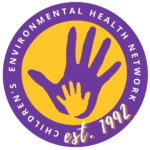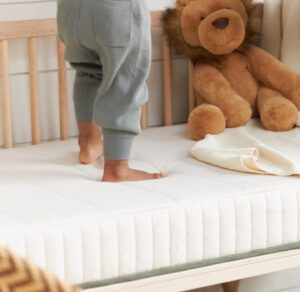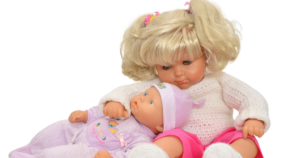Quality Child Care and Environmental Health
The COVID-19 pandemic has placed a heightened focus in child care settings on maintaining safe and effective cleaning, disinfecting and ventilation practices. This is important for not only children’s health but also for staff safety.
The National Accreditation Commission for Early Care and Education Programs offers early childhood leaders the opportunity to demonstrate and document quality performance using research-based criteria and evidence-based practices. The National Accreditation Commission provides a comprehensive, ongoing quality improvement system that recognizes the inherent diversity among programs through the self-study and award process. Over 1,300 early learning programs in 35 states, the District of Columbia and overseas participate. The National Accreditation Commission recently comprehensively incorporated environmental health best practices into their accreditation standards. These new standards can help providers maintain a safe and healthy child care facility during the COVID-19 pandemic.
The Eco-Healthy Child Care® (EHCC) program worked with the National Accreditation Commission to update the standards. The updated standards are based upon EHCC’s eco-healthy checklist. EHCC endorses facilities (center and family child care) who comply with 24 of 30 simple, free or low-cost environmentally healthy best practices found on the checklist.
Below are some National Accreditation Commission standards relevant to safer ventilation, cleaning and disinfecting practices.
National Accreditation Commission Standard: D13. Steps are taken to ensure that indoor and outdoor air quality is monitored.
- Adequate ventilation is maintained by using an HVAC system, fans, and/or open screened windows.
- HVAC filters are changed or cleaned at least every 3 months or more often if indicated by manufacturer’s guidelines.
National Accreditation Commission Standard D17: Least-toxic cleaning, sanitizing, and disinfecting products are consistently used according to manufacturers’ instructions.
- Sanitizer/disinfectant other than household bleach is used:
- Sanitizer/disinfectant is EPA registered.
- Sanitizer/disinfectant is the least toxic option for use around children.
- Sanitizer/disinfectant is prepared and used according to manufacturer’s instructions, including appropriate contact time.
- The sanitizer/disinfectant is only used for its intended purpose and in strict accordance with all label instructions.
To learn more about safer cleaning, disinfecting and ventilation best practices related to early care and education and COVID-19, access EHCC’s free fact sheets which are user-friendly and include links to numerous science-based resources. Share these EHCC fact sheets with your colleagues and the families you serve.
If you are looking for an interactive learning experience EHCC’s newly updated Protecting Children’s Environmental Health e-course is a great resource. The e-course provides no-to-low cost strategies for preventing children and staff from unnecessary exposures to harmful chemicals found in cleaning products, plastics, and furnishings, among other hazards.
The Protecting Children’s Environmental Health course is approved for adult learning clock hours in 48 states. Fulfill your hours and gain a better understanding of what environmental hazards may be found in and around your child care facility.
SAVE the DATE! On April 29th at 1pm ET EHCC and the Association for Early Learning Leaders/National Accreditation Commission will be hosting a webinar on children’s environmental health and NAC’s new accreditation standards.









